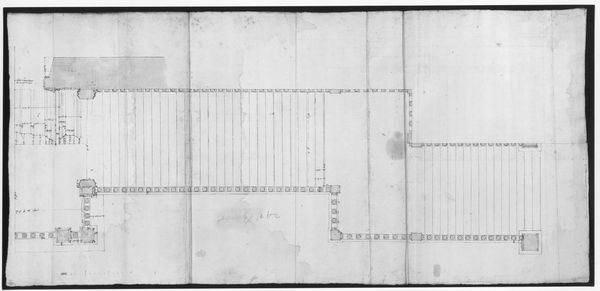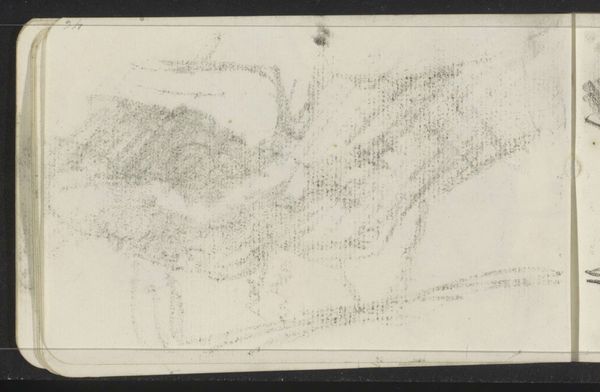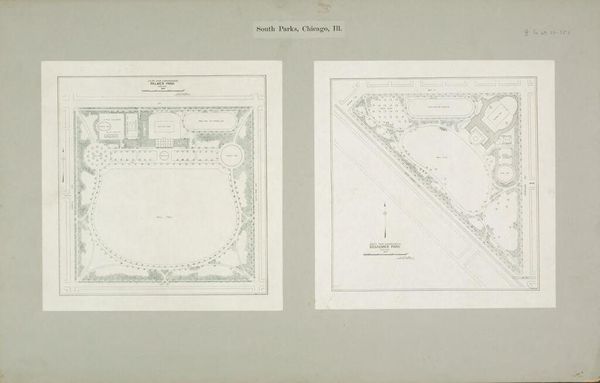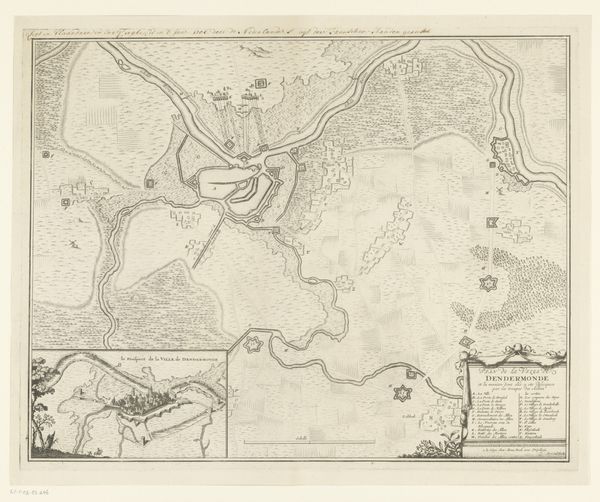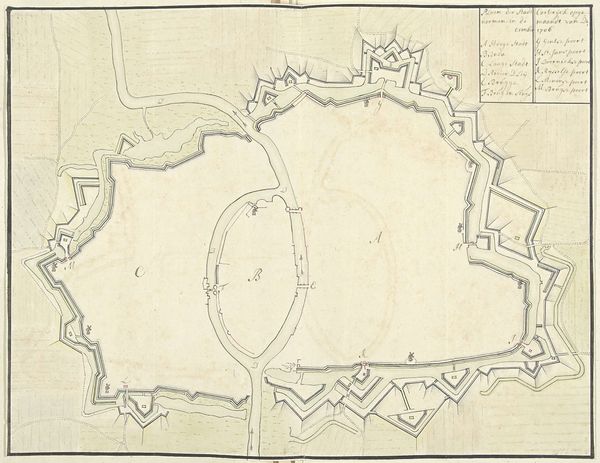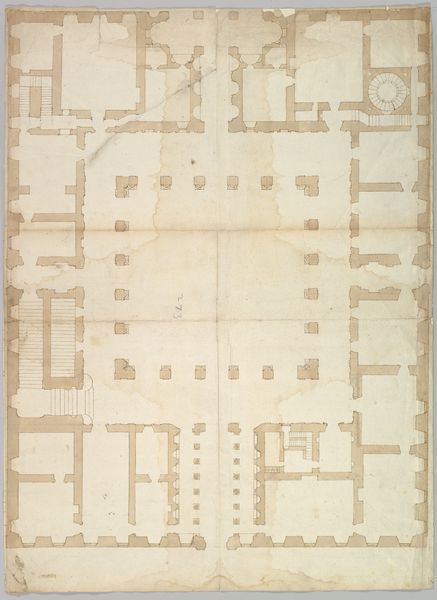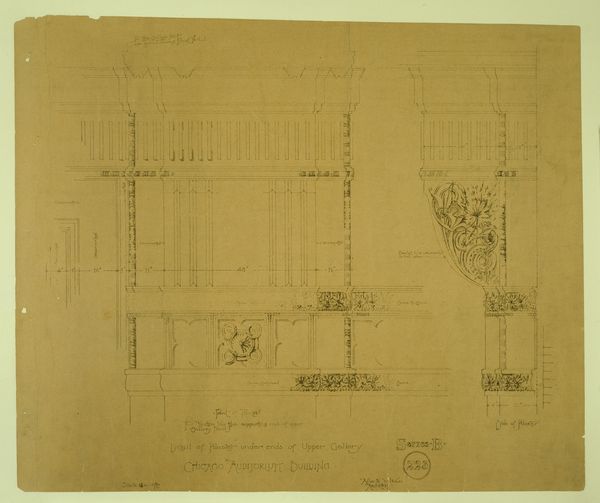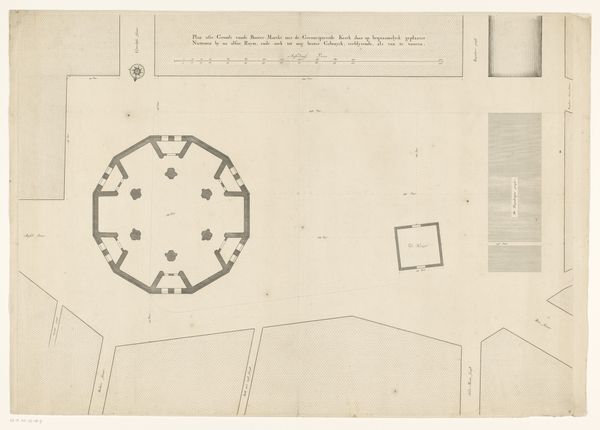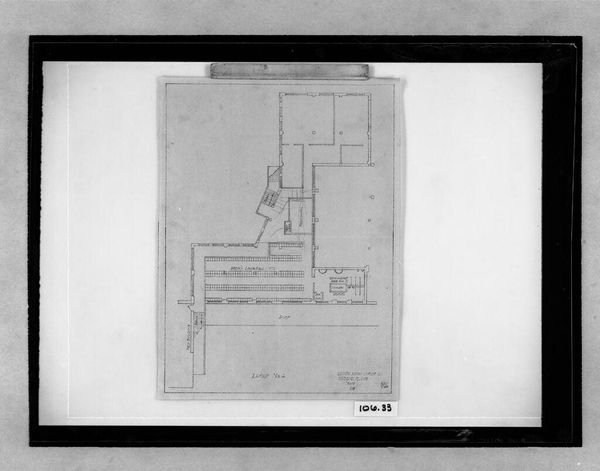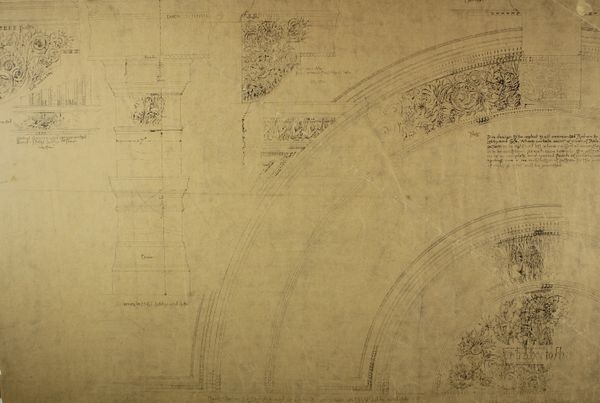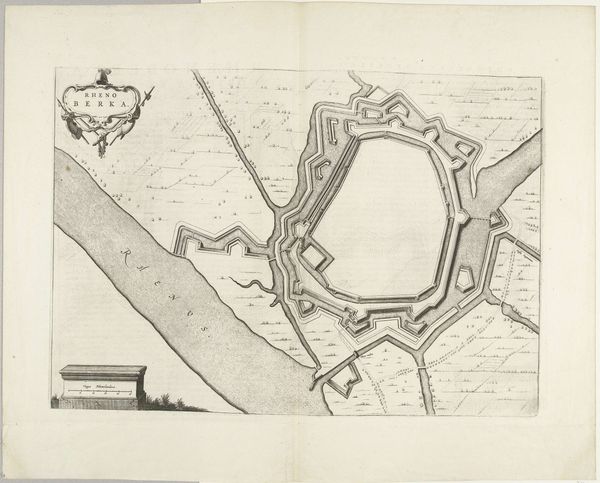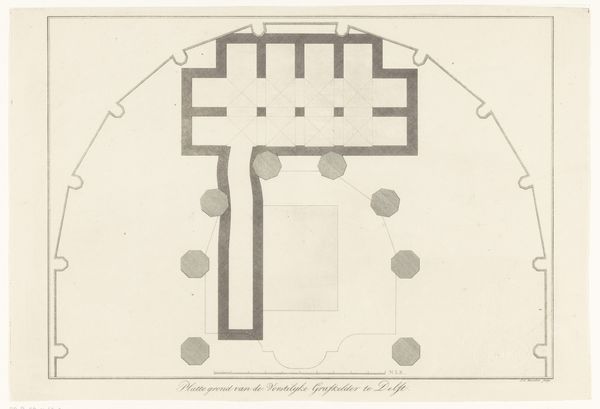
drawing, paper, pen, architecture
#
drawing
#
paper
#
11_renaissance
#
geometric
#
arch
#
pen
#
italian-renaissance
#
architecture
Dimensions: sheet: 17 5/16 x 35 3/4 in. (44 x 90.8 cm)
Copyright: Public Domain
Curator: Looking at this intricate drawing titled "St. Peter's, plan (recto) blank (verso)," created anonymously between 1500 and 1560, one is immediately struck by the complexity of the architectural design. What are your initial impressions? Editor: Stark, measured, and yet, the faintness of the lines against the paper lends it a sense of almost ephemeral power, like a dream half-remembered. There’s also the implied weight of authority, right? A building like St. Peter’s—power inscribed on the landscape. Curator: Precisely. Architectural plans, especially for monumental structures like St. Peter's, hold immense symbolic weight. Geometry itself was often seen as a reflection of divine order, mirroring the cosmos. The building would serve as a mirror, connecting heaven and earth. Editor: Yes, and the precision evident in the lines—the way they map out not only space, but hierarchies. I can’t help but think about how the physical structure dictated who had access, and who was excluded from the holy space and thus divine favour. Curator: Indeed. Renaissance architecture synthesized classical ideals of proportion and harmony with Christian theology. Those domes and arches you see weren’t simply aesthetic choices; they represented aspiration, ascension. Each architectural element became symbolic, often imbued with moral and spiritual significance. Editor: I’m thinking about the artist’s intent, too. This blueprint isn’t just a technical document; it’s a projection of an ideology. The very act of designing, of attempting to create a perfect space, seems to assume an ability to impose a specific social order. It speaks to a deep need to exert control, physically and socially, and yes, even spiritually. Curator: I concur. This drawing, created with pen on paper, is so much more than simply lines on a surface. Editor: A visual manifesto, if you will, representing more than bricks and mortar. Considering the struggles and changes within the church itself during that era, the idea of manifesting stability via architecture…fascinating! Curator: Indeed. A truly interesting commentary. Editor: My pleasure.
Comments
No comments
Be the first to comment and join the conversation on the ultimate creative platform.
